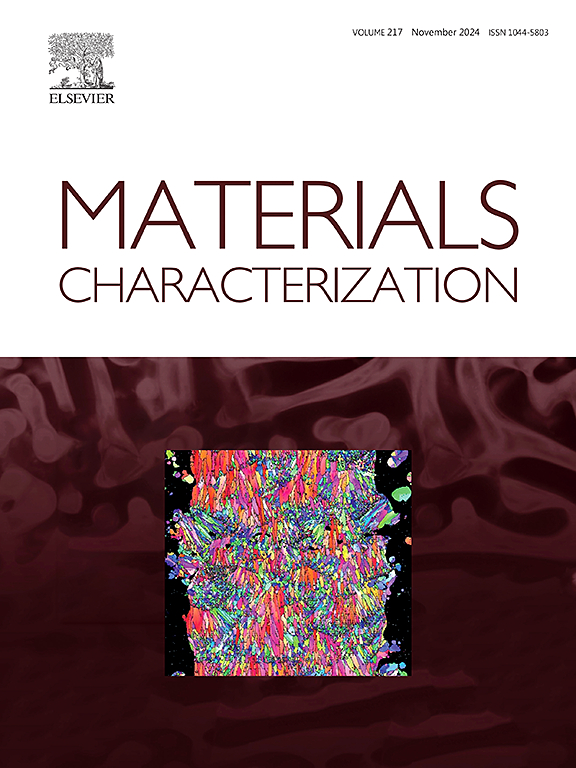Assessing microstructure, morphology, and mechanical properties of Al-2Fe-1Ni alloy through correlational characterization analysis
IF 4.8
2区 材料科学
Q1 MATERIALS SCIENCE, CHARACTERIZATION & TESTING
引用次数: 0
Abstract
One approach to addressing the growing demand for Al alloys in an environmentally sustainable manner is through recycling. However, the primary challenge involves mitigating the loss of mechanical properties and expanding the application range of scrap-containing alloys, primarily due to the formation of deleterious Fe-rich intermetallic phases. To tackle this issue, various methodologies have been explored, ranging from the less efficient dilution of scrap in primary Al to the use of elements such as Ni that modify these harmful phases, combined with control of solidification thermal parameters. Despite the potential of this approach, there is a notable gap in the literature regarding the formation kinetics of Fe-rich intermetallics under varying thermal conditions and the addition of Ni in Fe-rich Al alloys. This study investigates the Al-2Fe-1Ni alloy solidified at cooling rates of 0.5 K/s and 10.5 K/s using optical microscopy, SEM, XRD, EBSD, XCT, and tensile tests. The findings demonstrate the effectiveness of Ni in suppressing the formation of the primary Al13Fe4 intermetallic phase and promoting microstructures predominantly composed of eutectic cells containing Al + Al9FeNi. The Al9FeNi fibers within the eutectic cells exhibited morphological variations, with the central segments being more refined and orderly compared to the coarser and less aligned peripheric segments. Furthermore, the microstructural refinement induced by increasing the cooling rate during solidification (from approximately 1 K/s to 8 K/s) resulted in enhanced yield strength (from 88 MPa to 125 MPa) and tensile strength (from 116 MPa to 138 MPa), while maintaining ductility, as evidenced by a consistent fracture strain of approximately 25 %.
求助全文
约1分钟内获得全文
求助全文
来源期刊

Materials Characterization
工程技术-材料科学:表征与测试
CiteScore
7.60
自引率
8.50%
发文量
746
审稿时长
36 days
期刊介绍:
Materials Characterization features original articles and state-of-the-art reviews on theoretical and practical aspects of the structure and behaviour of materials.
The Journal focuses on all characterization techniques, including all forms of microscopy (light, electron, acoustic, etc.,) and analysis (especially microanalysis and surface analytical techniques). Developments in both this wide range of techniques and their application to the quantification of the microstructure of materials are essential facets of the Journal.
The Journal provides the Materials Scientist/Engineer with up-to-date information on many types of materials with an underlying theme of explaining the behavior of materials using novel approaches. Materials covered by the journal include:
Metals & Alloys
Ceramics
Nanomaterials
Biomedical materials
Optical materials
Composites
Natural Materials.
 求助内容:
求助内容: 应助结果提醒方式:
应助结果提醒方式:


